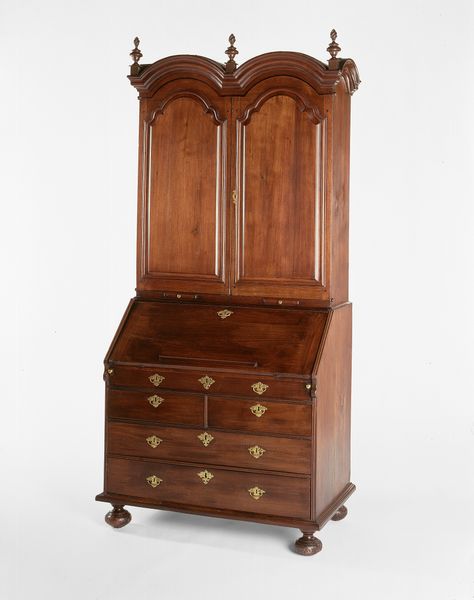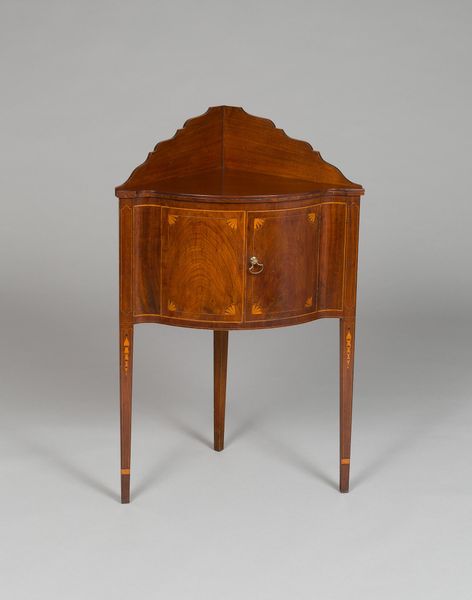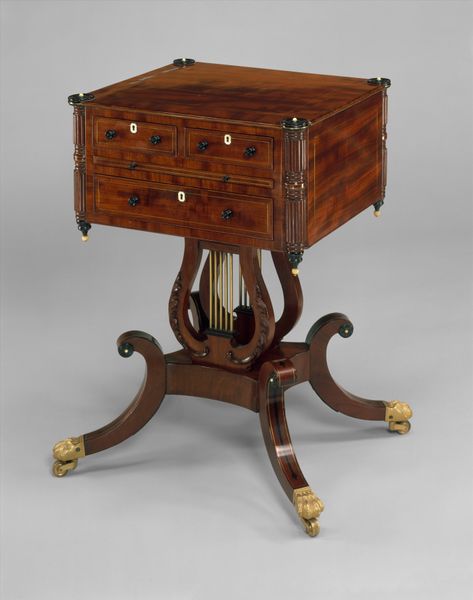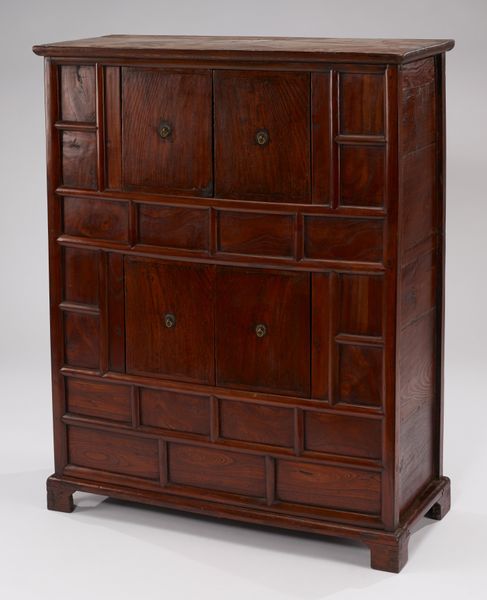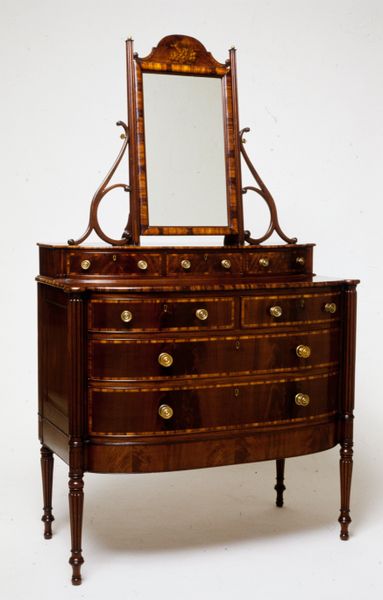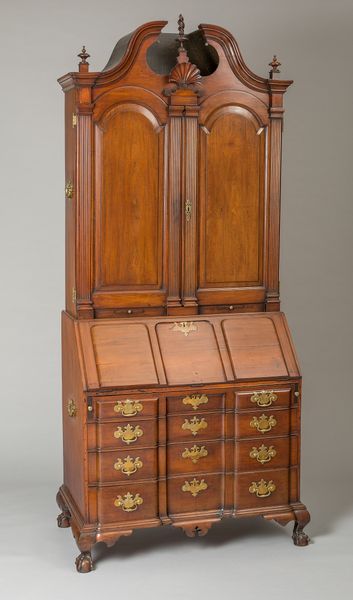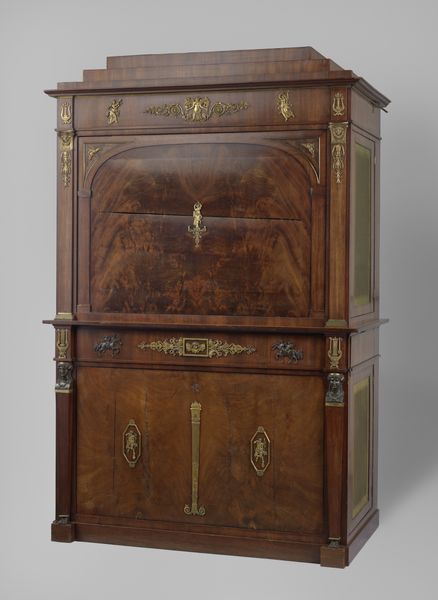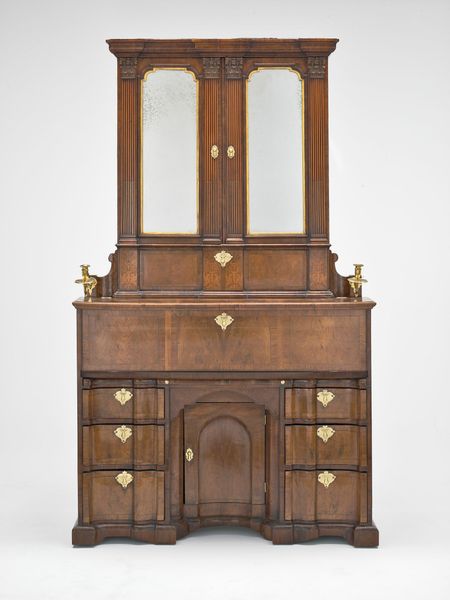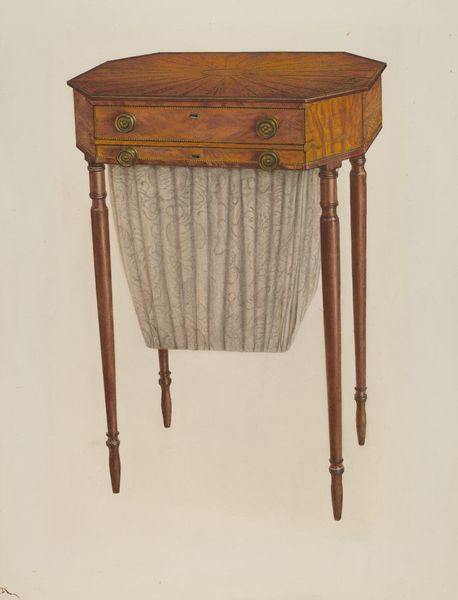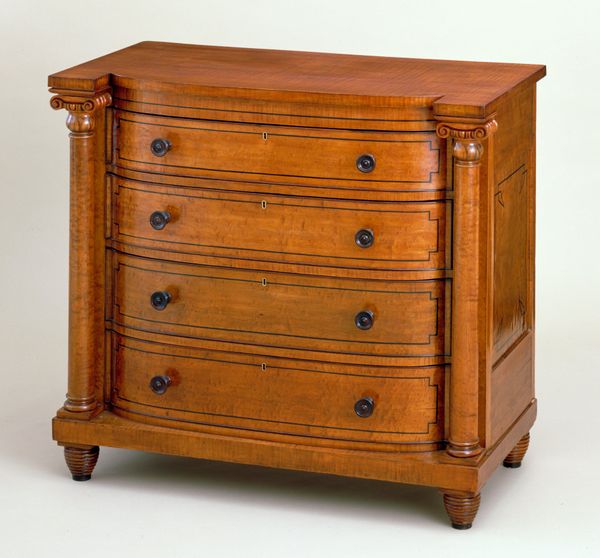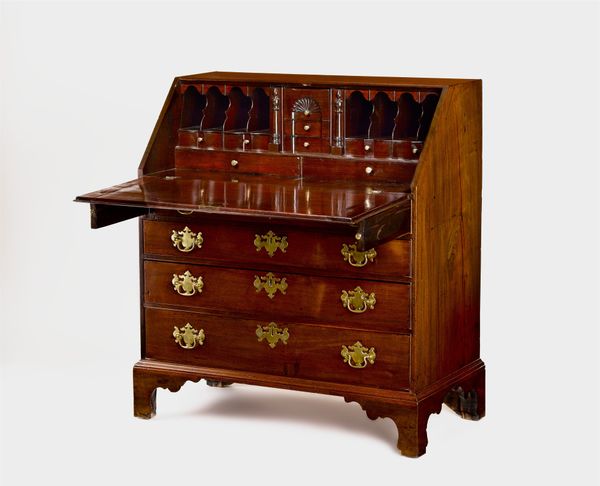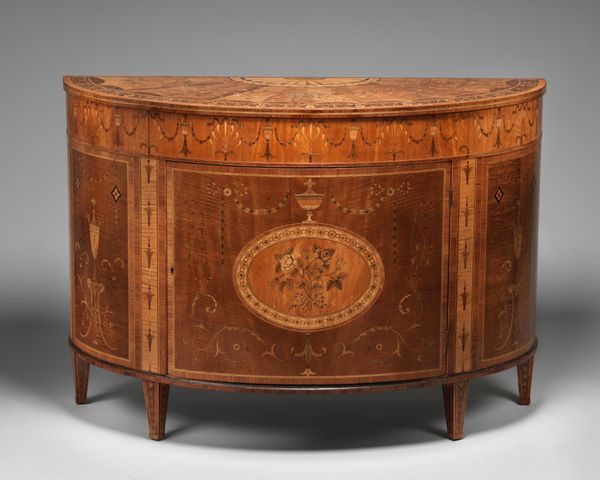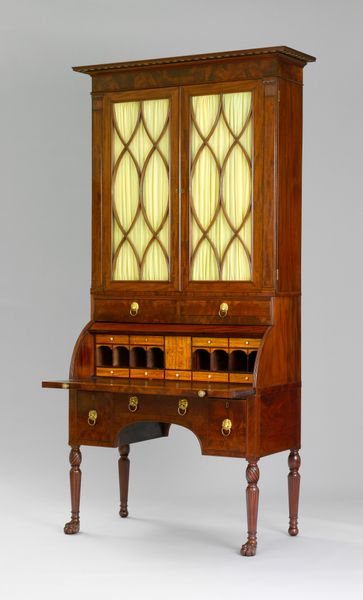
wood
#
wood texture
#
furniture
#
wood
Dimensions: 73 x 38 1/2 x 20 1/2 in. (185.42 x 97.79 x 52.07 cm) (closed)
Copyright: Public Domain
Editor: Here we have a Biedermeier secretary made around 1834. It's an amazing example of furniture-making using wood, and the symmetry, combined with the very pronounced wood grain, makes it seem so inviting. What do you make of this piece? Curator: The Biedermeier period always speaks of intimacy and domesticity. Think about the swirling patterns in the wood – they almost feel like encoded narratives, don’t they? Editor: Encoded narratives? How so? Curator: In an age defined by political repression, people invested heavily in their homes. Notice the locks: they're not merely functional. They function as personal talismans, suggesting hidden knowledge, or secrets that the owner felt important to guard. Even the bulbous shape could be read as a protective shell. Do you see that resonance? Editor: Yes, now I see it! So it's not just about having a place to write, but creating a safe and beautiful world within the home. Curator: Precisely. It transforms the practical into something profoundly psychological, creating a stage for self-reflection and quiet resistance to the outside world. What does it make you think of? Editor: It makes me wonder about all the letters and journals that were written inside… Curator: And those unseen stories give the object power, even now. It's a vessel of history and emotion. Editor: This conversation has really shifted my perspective, revealing stories held within a piece of furniture. Thanks so much.
